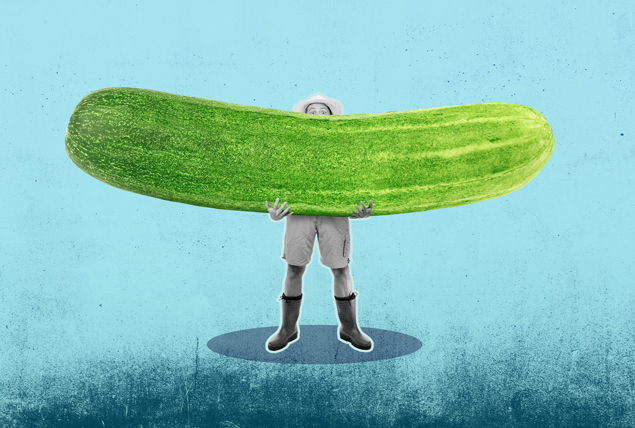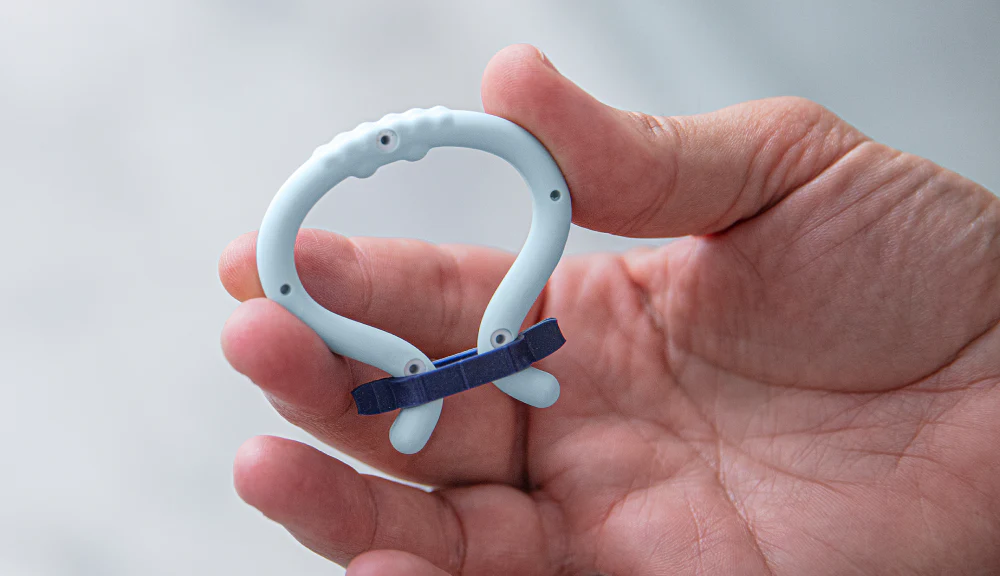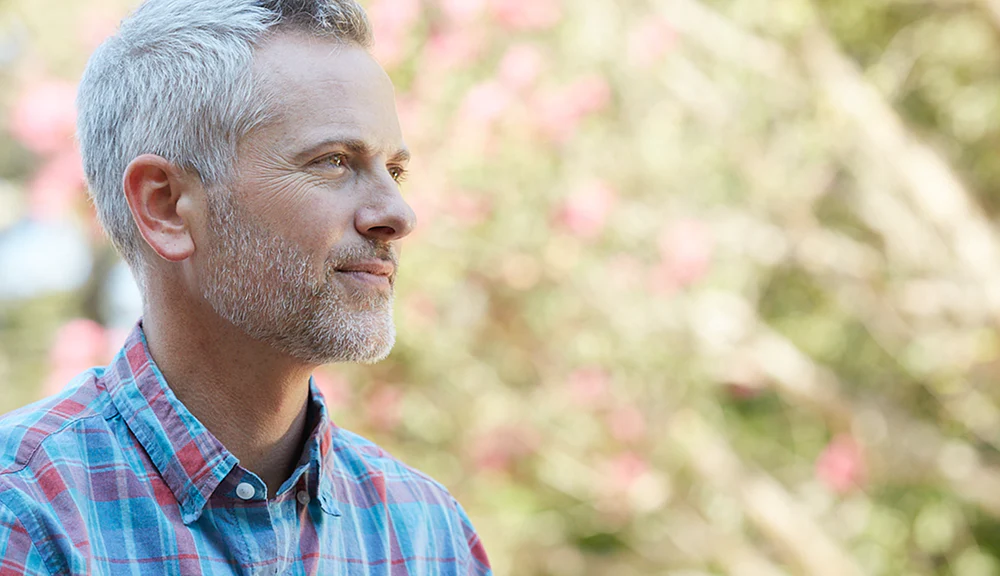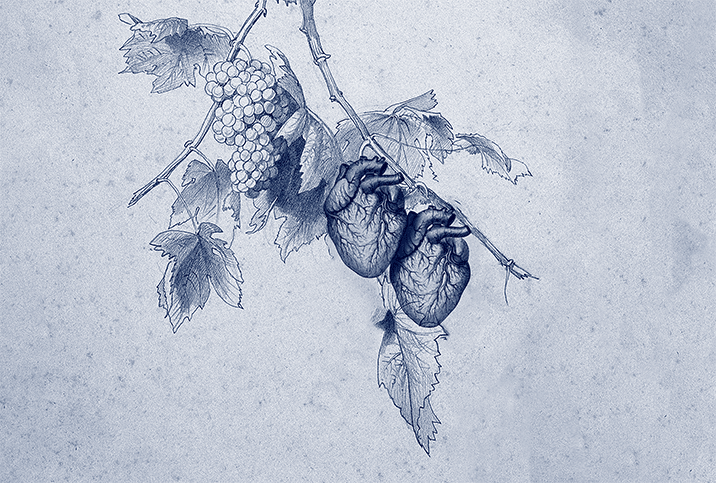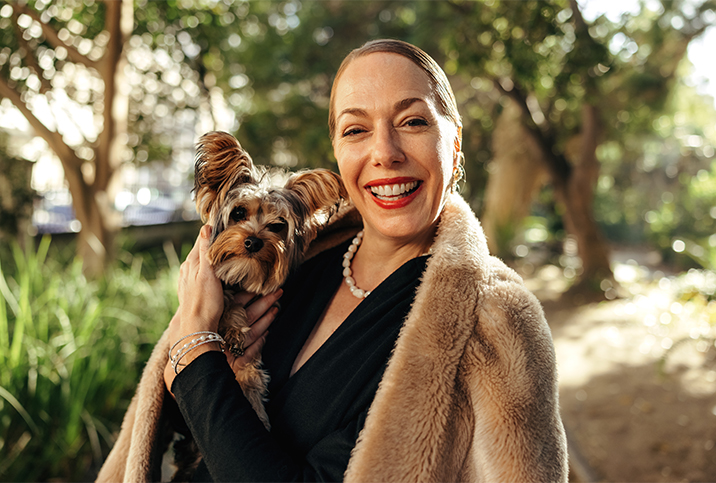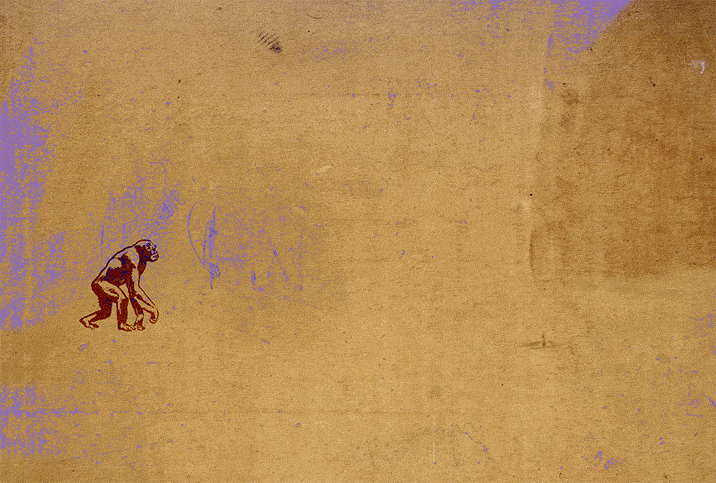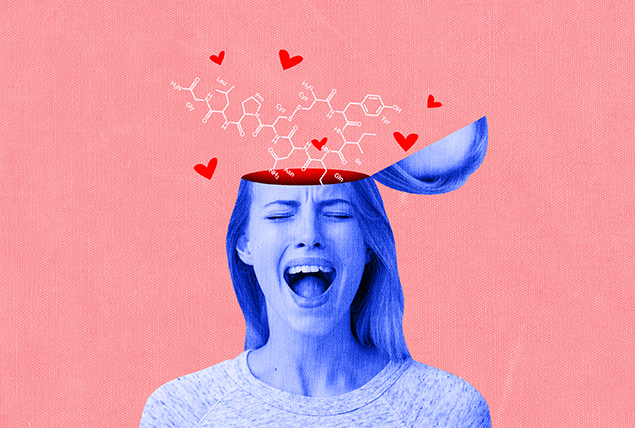The Giddy Interview: Love and Oxytocin With Sue Carter, Ph.D.
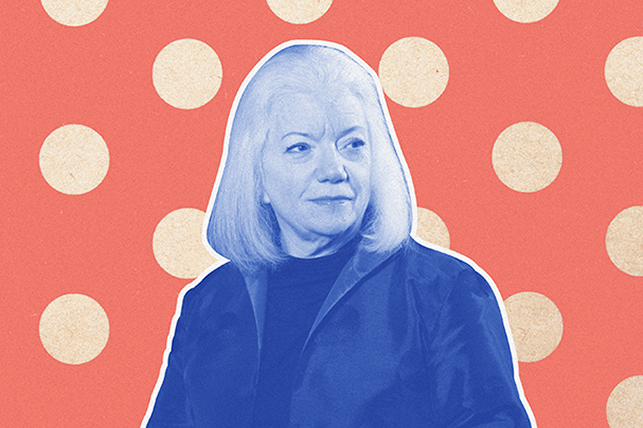
Key Points
- Creating the scientific term, social monogamy, Carter noted the underlying behavioral similarities between humans and prairie voles.
- Carter invented the concept of sociostasis to try to explain the necessity human beings have for the company of others.
- Over the past three decades, Carter has had a pivotal role in our understanding of oxytocin and the importance of the love hormone in human evolution and development.
For all the technological advances in our contemporary society, the need for core answers on love and relationships remains a top priority for people. Thanks to advances in research and science, partial answers exist to why we seem hard-wired to seek love, companionship and emotional bonds.
Sue Carter, Ph.D., has been at the forefront of this research studying the hormone vasopressin and the more familiar oxytocin, commonly referred to as the "love hormone."
Carter is a distinguished university scientist and Rudy Professor Emerita of Biology at Indiana University. She served as the executive director of the Kinsey Institute and the co-director of the Brain Body Center at the University of Illinois, Chicago. In addition, she's been the president of the Behavioral Neuroscience Society and the recipient of the National Institute of Mental Health Research Scientist Award. Currently, she is a professor of psychology at the University of Virginia.
Her career spans more than 50 years, beginning with studies in biology and zoology, which led her to neuroscience, endocrinology and research on how the nervous system functions. Her work led to new discoveries with important implications for human bonds and attachments.
She is writing a series of articles about "life in a female body" that may be part of a book in the near future.
In this exclusive interview with Giddy, Carter speaks about her path as a researcher and scientist and how the science of love is actually changing how we view ourselves as social beings.
Editor's note: This interview has been edited for length and clarity.
You created the scientific term social monogamy. Can you explain how prairie voles became so important to understanding this social behavior and human behaviors?
Carter: Human behavior is a good deal more complex than vole behavior, but there are some underlying principles. Both humans and voles form selective, lifelong social bonds. We're probably more like prairie voles when we're young, when our nervous systems are searching for new relationships and social safety with other people. This fact makes us more biologically and less culturally driven than we'd like to admit.
What makes prairie voles interesting among rodents is that they are socially monogamous, meaning they prefer to spend time/live with one partner. However, if you put them in a situation in where a female is in estrus and you give her a choice of who to mate with, she will not necessarily choose her life partner. In this way, she's indiscriminate. Some people would call that promiscuous, but I don't think so. She's just saying, "I don't care."
And what she's also probably doing is gathering more variation in genes for her offspring with possible benefits in an evolutionary sense. For example, some of the offspring from different fathers may be more resistant to drought conditions or low food supplies. Others might be more social, with the benefits that come from living in groups or families.
Despite her willingness to mate with strangers, female voles are very particular about whom they remain in contact with. Interestingly, early on in our experiments, I assumed that sexual monogamy was the only monogamy. It wasn't. Rather, it's only a process that we humans have labeled monogamy. In truth, what was more important to the voles was who was there with them, who supported them and who defended their territory in the case of an intruder. As in humans, who helps raise the babies is vital, and the male prairie vole is a fantastic father who equally shares in caring for the babies.
In my research, I kept noticing missing pieces. There were discrepancies in knowledge and timing between reality and what I expected, based on cultural expectations or human notions of right and wrong. It was the apparent inconsistency that interested me most.
I realize many scientists would be unhappy if they didn't get what they expected. But to me, that was what made the whole story interesting. Something was missing.
In 1980, I began doing human studies. I did this research on a part-time basis since my main laboratory was devoted to rodents and voles. However, I would use what I learned in the animal work to help myself ask questions about people. And what I saw in human behavior led me to ask: "Could we model that same behavior in animals?" The answer was yes, since humans and voles will display similar patterns.
I have an inborn skill, something you might call pattern recognition. I can see when things are following a pattern or when a pattern is broken. Whether animals or people are doing something that seems patterned or they seem to repeat themselves, I look at that kind of behavior as data. As useful information toward a larger goal.
And when an inconsistency gets in my head and keeps rolling around, I try to understand it. Furthermore, I was never satisfied with answers that would apply to only prairie voles or nonhuman animals. This forced me to step back from the minutiae and look at the larger picture.
Recommended
- The Deep, Evolutionary History of Monogamy: Explore the theories for how humans became monogamous millions of years ago.
- Toxic Monogamy: What If Happily Ever After Isn't That Happy After All?: It is ingrained in our culture, but monogamy might not look the same to everyone.
- 5 Simple Breathing Techniques for Stress: Everyone's on edge these days, but did you know that how you breathe can help ground you?
What led you to start researching oxytocin and vasopressin?
Most neuroendocrine questions in the early days of this science—back in the 1960s and 1970s—were focused on steroid hormones, especially ones synthesized in the gonads.
In the 1970s, I began studying social behavior. However, steroid hormones did not explain changes in our subjects' social behaviors, especially after they mated. For example, after mating, female hamsters became asocial and deadly aggressive toward the male if he could not escape. Following sexual interactions, the female prairie voles did not become aggressive toward their partner. Instead, they huddled with the male and became very specific about who they would sit near. Sexual interactions were critical in both cases, but the behaviors were not identical.
This came as a surprise to me, because I thought sexual behavior was a component of social behavior. But in fact, it became very clear that the two could be separated. I was always fascinated by sociality and why animals or humans were either friendly, asocial or aggressive. I began to suspect that whatever was happening in these animals was due to a neurochemical process, triggered specifically by sexual interactions, rather than being simply a learned behavior.
When I began this work, it was already known sexual behavior released oxytocin. Vaginal or cervical stimulation in females released oxytocin and was familiar to agriculturalists, who called this the Ferguson Reflex. So it was not totally a surprise that the release of specific hormones might be changing the brain. However, our experiments showed the active hormones were probably not from the usual suspects, such as the ovaries or the adrenal glands, but were more likely made in and acting on the nervous system.
In the early 1970s, I was teaching human sexuality to medical students at the University of Illinois. The intention of the course was to desensitize young doctors so they would be comfortable with discussions of human sexuality. In that course, the students viewed a medical film based on the book "Human Sexual Response" by Masters and Johnson.
That book provided intimate details on human behavior that had not been described before, at least within science. The film documented what the book had described. In one scene, the subject was a lactating woman. During her self-described orgasm, milk spurted out of her breast like a little fountain. It had been known since around 1900 that oxytocin was essential for milk ejection.
Although scientific papers on the biology of human sexuality were very rare, to my way of thinking, this scene clearly linked oxytocin to an orgasm.
However, it would be a decade later when other pieces of the puzzle fell into place. In 1983, a group at the University of Cambridge, led by Barry Keverne, published a study that showed in sheep that cervical stimulation, through the release of oxytocin and working in the brain, was necessary for ewes to attach to their own lambs. In our research with prairie voles, being done in that same time period, we also discovered that mating facilitated pair-bond formation.
Taken together these findings suggested the release of oxytocin, presumably acting on the nervous system, might be a critical link allowing animals—including humans—to develop specific attachments toward either their offspring or sexual partners.
Social bonding in prairie voles and sheep shared an important trait. In both species, social bonds were highly specific and selective and usually directed to the animal that was present around the time of vaginal stimulation. The release of oxytocin was necessary, not just to encourage approach or reduce avoidance of novelty, but for the development of social bonds. This concept is still used in scientific definitions of attachment or "love."
Between the Pages: 'Contemporary Sex Therapy' Updates Old Approaches: Cate Campbell's book "Contemporary Sex Therapy: Skills in Managing Sexual Problems" explores sexuality and the uniquely 21st-century issues facing sex therapists today.
Do both females and males have this love hormone oxytocin?
Yes, but there are still missing pieces concerning the effects of oxytocin in males and females. We found early on that oxytocin and the related hormone, vasopressin, were both important for pair bonding in both male and female prairie voles. However, males formed pair bonds more quickly when they were under stress—in this case, a five-minute swim stressor—or when given the adrenal hormone corticosterone. In females that same experience or receiving a high dose of corticosterone actually slowed pair-bond formation.
These differences have yet to be fully understood. It's often assumed females have more oxytocin than males. But sometimes these differences are not apparent. Possibly during midlife, when steroids are high in both sexes, males and females, including humans, can have similar blood levels of oxytocin. However, under stress or over the course of aging, and especially if estrogen remains high, women begin to have significantly higher levels of oxytocin than men. There is evidence of an estrogen and oxytocin link in the functions of oxytocin, but this is almost certainly more complicated than we realize.
My general thinking at present is that oxytocin's effects are especially obvious in females when the molecule is needed to help manage stress or other challenges. Although males also have oxytocin, they seem less sensitive to acute stressors, possibly because they are capable of using the androgen-dependent peptide vasopressin to do some of the same tasks relegated to oxytocin in females.
Males may be more sensitive to vasopressin, with an enhanced capacity to form pair bonds during stress or when defending themselves or resources in the environment. In comparison to females, this probably allows males to show active behaviors, including defense or aggression.
Females have a different reliance during challenges on positive social behaviors, including immobility without fear, and these rely on a different set of neuroendocrine pathways. These neural pathways may be more dependent on oxytocin.
We have to keep in mind that oxytocin and vasopressin are incredibly adaptive and vary across the lifecycle. This is definitely a work in process. It is especially important to realize that the neuroendocrinology of males and females, especially in humans, is not binary. The same molecules are found in both sexes and can be influenced by not just sex steroids, but also by adrenal hormones and the immune system. Particularly important to humans is our perception of safety or threat, which is strongly influenced by social context. We are a long way from understanding the biology of sex differences, especially as it relates to relationships.
However, this brings me to the need for a new concept that I am calling sociostasis.
What Is It Like to Date an AI Chatbot?: For some people, companion chatbots offer thrilling possibilities for romantic relationships. AI companionship can fill the emotional needs of people dealing with loss, addiction or social anxiety. Find out more.
Love and sociostasis?
I invented the concept of sociostasis to try to explain that there's a specific physiology in humans that requires "The Other." It's the reason we can't just stick people in a room by themselves and expect them to have maximal good health, even if all of their physical needs are met.
A good example is the Russian politician Alexei Navalny, leader of the Russia of the Future party, who tried to run against Vladimir Putin in the 2018 presidential elections. Since being in solitary confinement under harsh conditions, he's lost weight and has severe digestive problems. He was a strong person, but he may die or come close to dying because his body cannot physiologically regulate being left alone in a cell. Navalny, like all of us, has a physiological homeostatic system that requires being with others to remain healthy.
I've taken this concept of sociostasis—this necessity of being with others—and begun to try to describe it in biological terms. Sociality is an important notion that has been often left out of the basic science of human health. We all accept now that disruptions in our body's homeostasis can make us sick.
We understand the effects of stress, but what we haven't recognized is we have an organized wellness system, capable of overriding fear and protecting us from even the most toxic threats. This system is very old, and you can see it with particular clarity in highly social animals like humans and prairie voles.
What does it mean to be a social organism that is dependent on others?
Humans are dependent on a caregiver before and after birth, and this dependency, even in most nonsocial cultures, lasts at least five or six years. This experience sets the stage for how we will manage challenges across our life space. In particular, I'm trying to use my oxytocin research to ask: "What are the unique features of our biology that allow us to be healthy and survive chronic stress and the diseases that are associated with modern life."
We have a lot left to learn about this big picture. For me, awareness of the functions of oxytocin is a kind of lens that can magnify our knowledge of what it means to be human.
What do you think about today's challenges and the future?
I think the big challenge right now, especially for young people, is to stay optimistic.
I was fortunate to some extent. When I set out on my personal journey, we knew much less about human biology. But I was also born at a time when we didn't understand all of our limitations. Perhaps that naive perspective worked in our favor.
In those days, most humans took social support for granted. We were in the midst of the Cold War and were most concerned about the dangers that might come from beyond our culture in the form of nuclear attacks or invasions.
In contemporary America, teenagers are vulnerable to social media—which is sometimes very asocial—pandemics and fears of climate change. We live in unpredictable times, and the human body has to adjust, whether we want to or not.
In 1992, I wrote my first general paper about oxytocin. In dozens of papers, continuing to this day, I have described in detail the importance of oxytocin in human evolution and development. This is a big question and the emergence, more than 200 million years ago, of oxytocin is part of the answer.
There are two basic laws of nature: survival and reproduction. To realize healthy human survival, we have to rethink who we are as a species. And we have to recognize our fundamental dependencies on others. Social needs can make us vulnerable.
However, with sociality comes many biological strengths, including the power of groups and even molecules like oxytocin, which can help to outweigh these vulnerabilities. In that context, oxytocin is a recently evolved molecular solution to the "stress of life," capable of supporting both survival and reproduction.
I am increasingly convinced the oxytocin our bodies self-produce is at the center of a wellness system. Oxytocin allows us to have a big brain and a remarkably talented immune system. Oxytocin allows us to use others to protect ourselves and those we care for. In other words, for mammals oxytocin is actually "nature's medicine."
But oxytocin is complex and possibly through its intimate relationship with social context can be a double-edged sword. Until we have a deeper understanding of how oxytocin functions, we need to respect and honor its power and make this knowledge more widely known.
I have been able to develop a whole cadre of colleagues and students. We need people who will devote years to solving what seems at first like minute problems. But those problems make sense once they're put into a larger context.
I hope to continue to be involved with the oxytocin story and to see if I can help excavate and reassemble more pieces of this ancient puzzle and allow this knowledge to be shared. I've spent all of my life, beginning when I was a child, trying to decipher the secrets of the living world. And even now, as I approach my eighth decade of life, I'm sure I'll continue.
I feel that an essential part of my life right now is to support a new generation of young scientists, helping those who will continue to unravel and rethink our understanding of what it means to be human.







